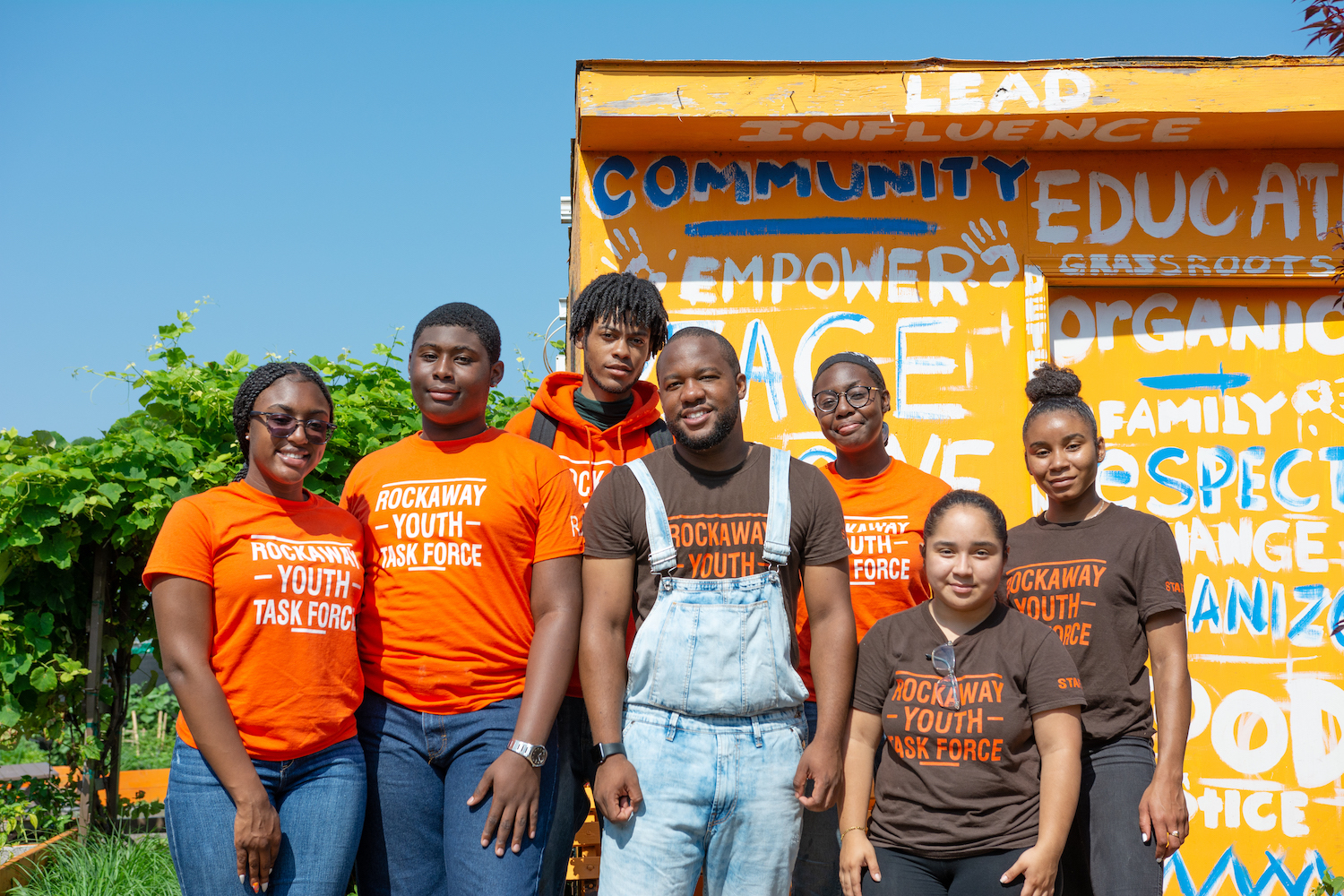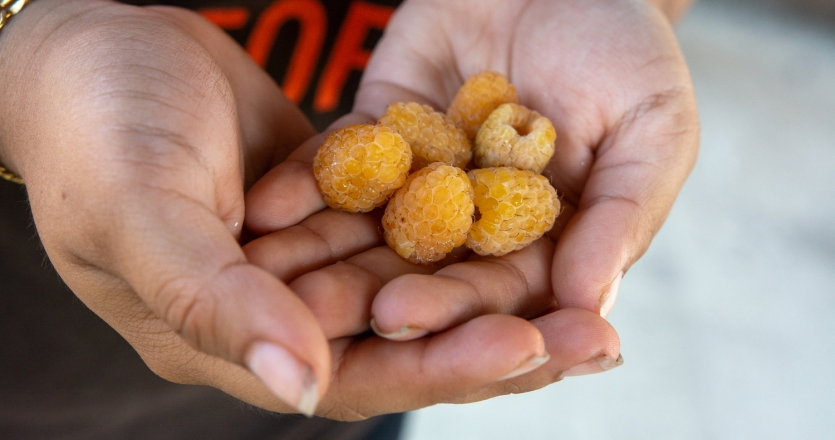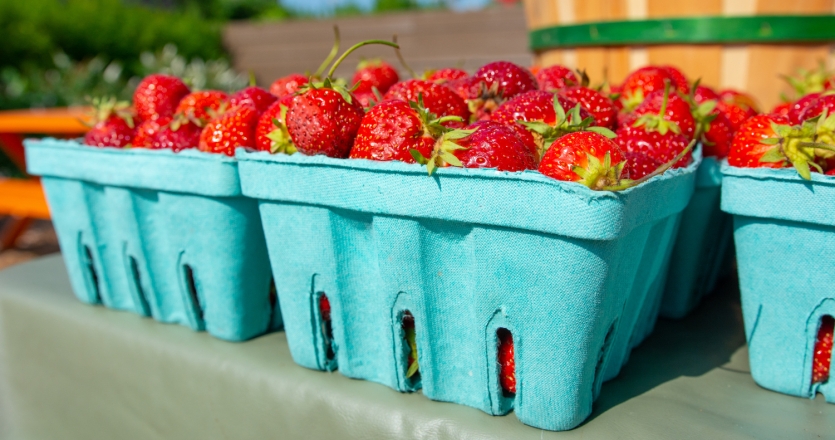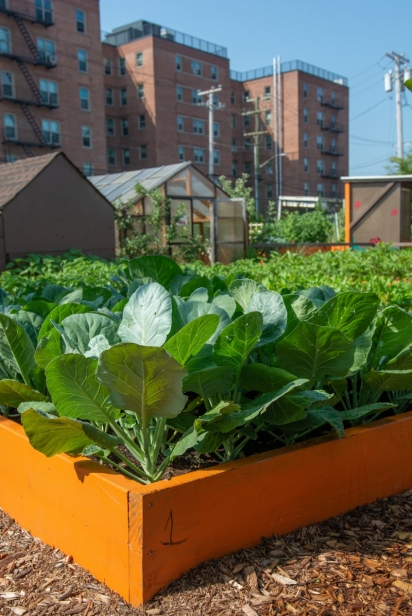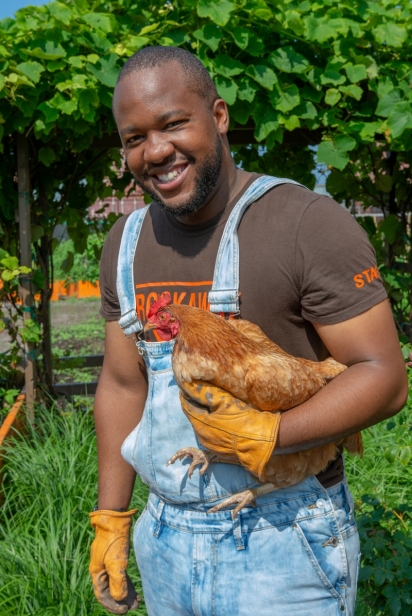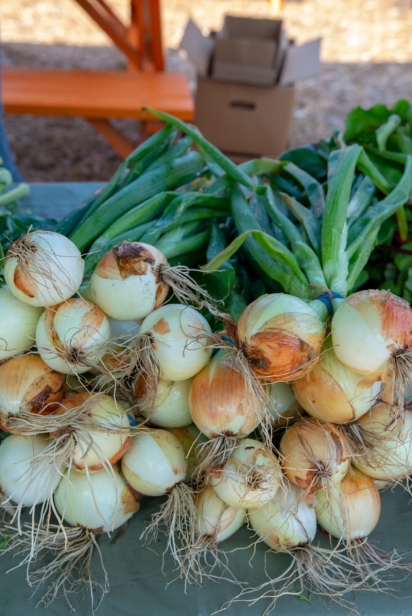Finding Roots in Rockaway
Like any angry New Yorker, Superstorm Sandy hit with a bang in 2012. Sandy left destruction and chaos in her path, but things were pretty far-off in Far Rockaway even before the storm came along.
In some ways, Sandy seemed to be a sort of blessing in disguise. After the dust settled, and electricity started coming back, the whole area was re-exposed in a new light. The town was damaged in so many old and new ways; many bodegas and businesses just shuttered forever. When people try to rebuild a city after destruction, they need to eat well. Like, really well. It became apparent that there was a dire need for the community to provide more than just greasy food. Since there weren’t—and aren’t—many healthy food options in the area, locals have been struggling to find good fuel for their bodies.
That’s where the Rockaway Youth Task Force (RYTF) came in. Although founded a year before Sandy hit, this youth-led grassroots organization—mostly run by women of color—was a true heroine, and went a long way after the storm settled.
Milan Taylor founded the social-justice-focused organization in 2011 when he was just 21. The initiative was in direct response to growing up in an area federally labeled as a food desert, a fancy way of saying that his hometown didn’t have readily available fresh produce for residents—foods that didn’t come in a can or jar. In nearby Manhattan, many restaurants serve fresh foods but don’t stay open very late. In Rockaway, these places don’t exist in the first place.
Since starting, the RYTF has expanded and split into many different projects within the larger one. One of those initiatives is Rockaway Roots, a volunteer program on the Urban Farm—located at the group’s headquarters—which puts young people to work raising food.
RYTF headquarters is sandwiched between two shops on Mott Avenue. Inside, after looking at stacks of flyers, the first thing I noticed was the vibrant orange interior and an energetic mural of Martin Luther King Jr. and other black figures from the community, painted by a local artist.
For this Green Issue of Edible Queens, we caught up with Community Engagement Organizer Andrea Colon and Operations Manager Aury Diaz, two of the women leading the RYTF movement, to talk about their journey from junk food to veganism, growing up in a food desert and what’s on the horizon for the RYTF Urban Farm.
Both Colon and Diaz started working with RYTF in high school, and are now earning their college degrees. The former is a first-generation college student from Guatemala and Puerto Rico studying economics at Baruch College; the latter says that while she’s officially studying biomedical science at Hunter College, she’s “undecided” on her major. The women at RYTF are smart, curious and reflective. They truly represent the resilient spirit of Far Rockaway and have plenty food for thought.
WHAT WAS IT LIKE IN ROCKAWAY DURING HURRICANE SANDY?
Andrea Colon: During Sandy, we lost power for a whole month. My family ate canned black beans on a gas stove since the microwave didn’t work.
WHAT DID YOU EAT GROWING UP?
Colon: Beans, corn and chicken. We didn’t eat too much red meat—it was expensive. Then Kraft mac and cheese. I became pretty Americanized. Now we are vegan.
Aubry Diaz: I mostly ate rice, beans, yucca, plantains and stuff like that. We are Dominican; we ate what was culturally available.
HOW HAVE YOUR EATING HABITS CHANGED SINCE GETTING INVOLVED WITH RYTF?
Diaz: I stopped buying juice. I really pushed during the summer to buy stuff from the farm stand. Things to make salads, because we barely cooked vegetables.
Colon: I eat “veganized” stuff like tofu cream cheese and bagels. I turned vegan for health, then for the animals because I feel bad for them. My father died from a stroke. There’s a lot of cancer in my family. I love French fries and need more produce. Two heads of broccoli costs about $10; it is much more expensive than a giant box of sugary cereal. Families are doing the best that they can but it’s sometimes the wrong decision based on limited choices. Eventually, the area will be gentrified—and then likely underwater after the next storm eventually hits.
WHAT DID YOU EAT FOR BREAKFAST TODAY?
Colon: Pan dulce from a Guatemalan bakery, with coffee. I go to Baruch College, and sometimes go to Fairway. We take two [monthly] trips to Whole Foods and I bring food with me. I’m too tired after class to buy food but sometimes stop to get groceries on my way back.
Diaz: A vanilla latte, and bread.
WHAT CHALLENGES HAS THE RYTF FARM FACED THIS SEASON?
Colon: It was frustrating to grow in late May. It went from winter to summer and not much spring in between. Some plants like to take their time. Fruit trees, cherry trees—[they] flower and bloom in the spring. And strawberries—they’re flowers. I don’t like strawberries, but people do and they miss out on them. [Also], mass growing 200+ pounds [of] tomatoes [means] a lot of mosquitoes by the bay, but [we] now have solar panels and winter plants.


